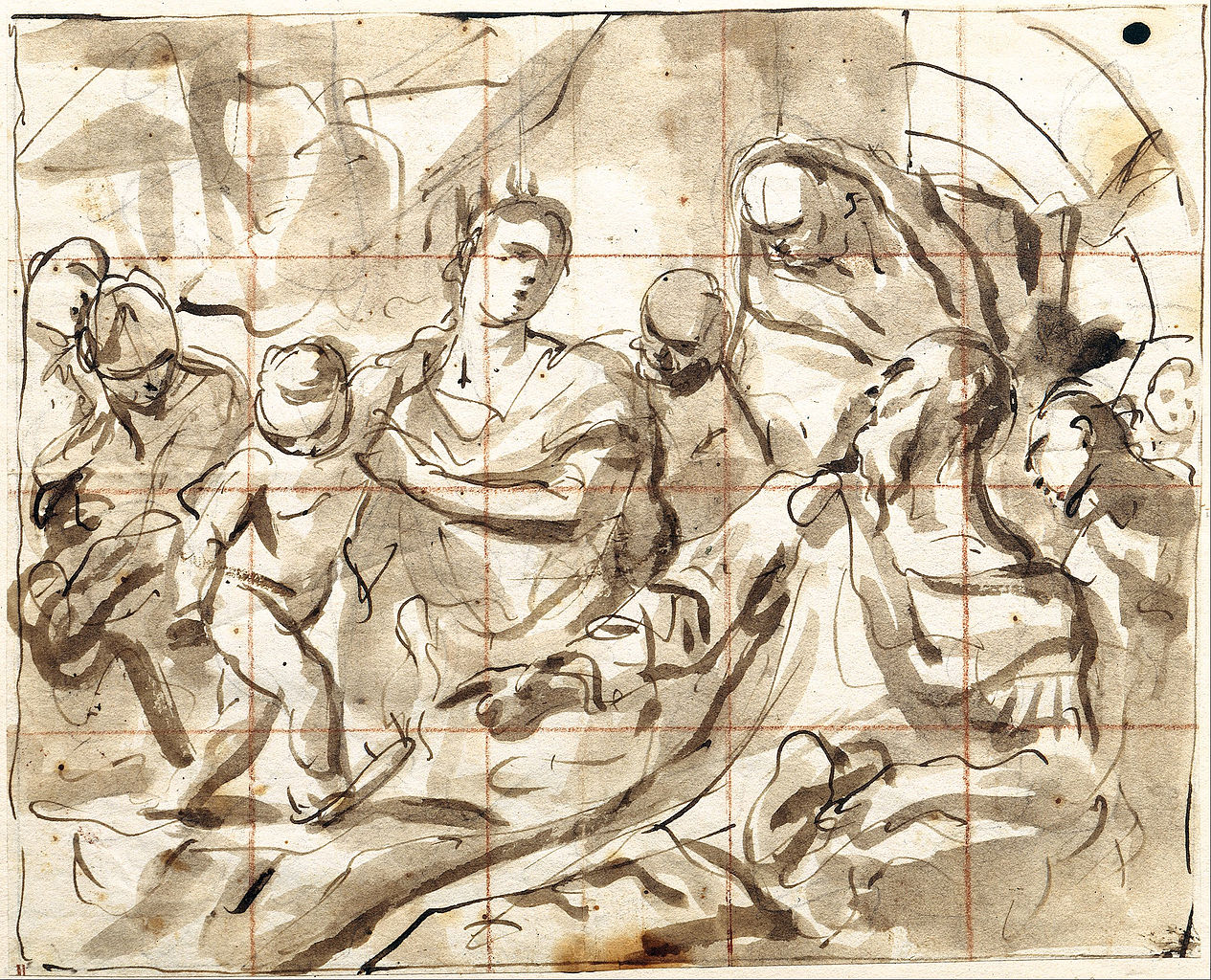Venetian painter Antonio Molinari died on 3 February 1704 in his hometown. Trained locally, Molinari was also influenced by Neapolitan naturalism, which he tempered with classicizing compositional arrangements and rich, glowing color. He focused his attention on history painting, and like many Baroque artists produced canvases with themes from the Old and New Testaments and classical mythology. An accomplished draftsman, Molinari has also left behind a large number of drawings including a number of preparatory sketches for surviving paintings. Certain drawings have been squared for transfer, demonstrating how Molinari transferred his ideas from sketch to large-scale finished work.
Adoration of the Golden Calf, 1700-2, oil on canvas. St. Petesburg, The Hermitage Museum
Judith with the Head of Holofernes, 1690, pen and blackbrown ink over graphite, brush and red and brown ink,red wash,squared in blackbrown ink. Düsseldorf, Museum Kunstpalast
Adam and Eve, 1701-4, oil on canvas. Muncie, IN, David Owsley Museum of Art, Ball State University.
The Boy Moses stepping on Pharaoh’s Crown, 1690s, pen, brush and brown ink, over preliminary drawing in graphite, brown wash, squared in red chalk. Düsseldorf, Museum Kunstpalast
Orpheus Battling Followers of Bacchus, pen and ink and wash. Paris, Musée du Louvre, INV 16216, Recto.




